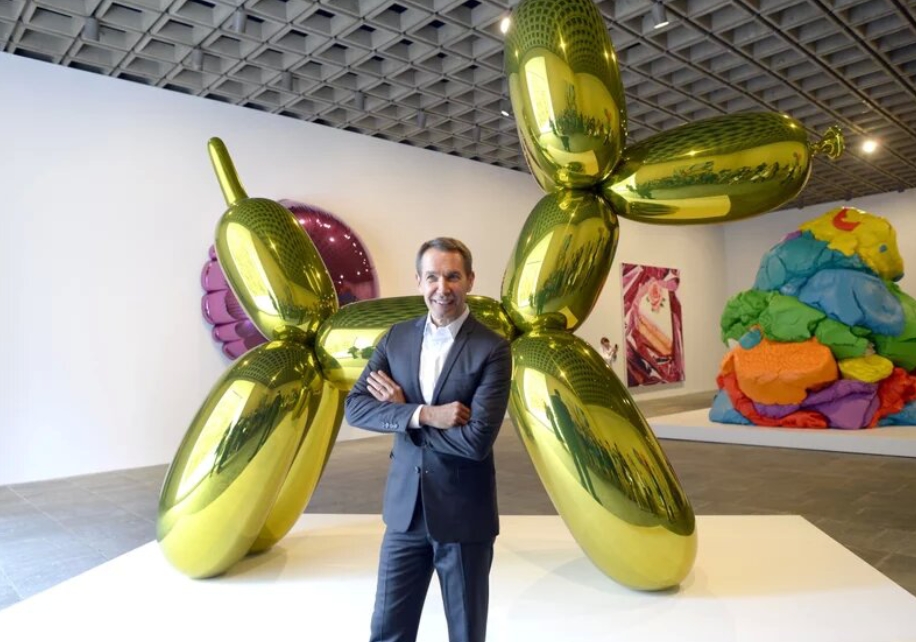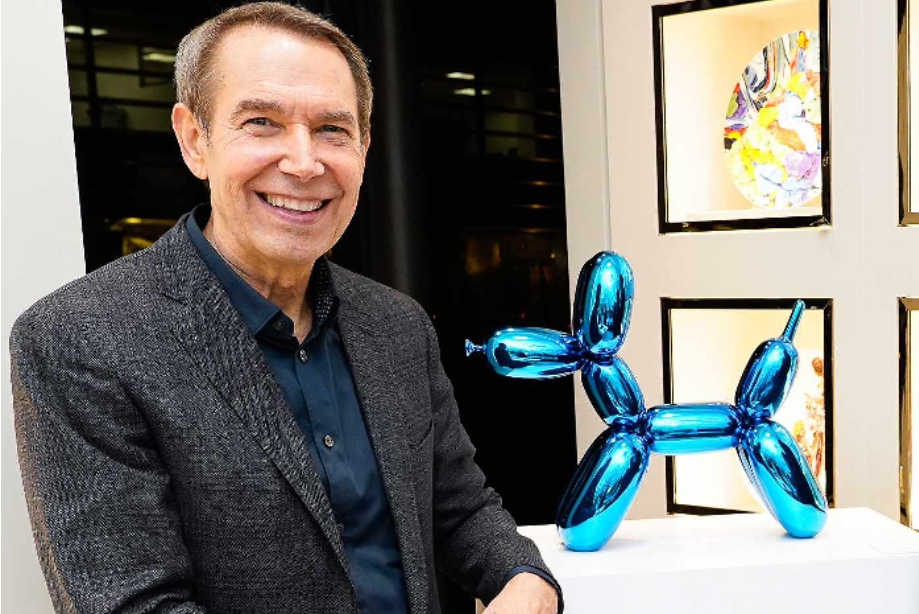
introduction
Jeff Koons is an important figure in the contemporary art world, known for his bold, innovative, and eye-catching works. Koons’s works often challenge the boundaries of traditional art, exploring the boundaries between popular culture and refined art. Among them, Jeff Koons Dog Sculpture series, especially the famous Balloon Dog, has become an important symbol of modern art.
Koons and his artistic style
Koons’ Art Career
Jeff Koons was born in York, Pennsylvania, USA in 1955. Since childhood, he has shown a strong interest in art. After receiving education at the Chicago School of the Arts and the Maryland School of the Arts, Koons began his professional art career in New York in the early 1980s. His works quickly caught the attention of the art community, renowned for his profound insights and expressions into consumer culture, advertising, and mass media.
Artistic style and creative philosophy
Koons has a unique and distinct artistic style. He is skilled at transforming everyday objects into artworks, using exaggerated forms and bright colors to stimulate the audience’s thinking. His works often draw on and reference elements of popular culture, such as advertisements, toys, decorations, etc., and are made of various materials such as stainless steel, glass, wood, etc. His creative philosophy is rooted in his reflection on consumer culture and modern life, attempting to express the complexity and diversity of contemporary society through his works.
Dog Sculpture Series
The Birth of Balloon Dogs
Jeff Koons Dog Sculpture series is one of his most famous works. These sculptures were first created in 1994 and are part of the Quince Celebration series. Inspired by balloon animals at childhood parties, Koons decided to transform this simple yet playful image into a large sculpture.
Materials and manufacturing processes
The balloon dog sculpture is made of high gloss stainless steel and painted in five different colors: blue, red, yellow, orange, and pink. Each sculpture is about 3 meters high and weighs about one ton. The production process is extremely complex. Firstly, the design drawings need to be converted into three-dimensional models, and then multiple processes such as casting and polishing are carried out to ultimately form a smooth mirror like surface. The production of each Balloon Dog Sculpture requires several months of time and a high level of craftsmanship.

Artistic expression and perception
The balloon dog sculpture leaves a deep impression on people with its huge size and bright colors. The surface of the sculpture is smooth and reflective, and the surrounding scenery and audience can be reflected on the surface of the sculpture, increasing the interactivity and visual impact of the work. The image of the balloon dog is simple yet familiar, with a childlike innocence and a hint of irony and humor, making the audience not only appreciate the work but also ponder its underlying meaning.
Symbolic significance and cultural influence
The symbolic significance of balloon dogs
The balloon dog is not just a playful image, it contains profound symbolic significance. Kuns explored various complex themes through this seemingly simple image.
Childhood and Innocence
Balloon dogs evoke memories of childhood parties and balloon animals, a symbol of innocence and joy with a strong sense of nostalgia. Koons attempts to evoke beautiful memories of childhood from the audience through this image, reminding people to maintain innocence and innocence in the busy modern life.
Reflection on Consumer Culture
The surface of the balloon dog is smooth and reflective, similar to the bright effect in advertisements and product displays, symbolizing the temptation and emptiness of consumer culture. Koons transformed this simple balloon image into a large sculpture, revealing the contradictions and conflicts between material desires and consumer culture in modern society.
The integration of art and popular culture
Koons’s balloon dog cleverly blends elements of elegant art and popular culture, challenging the boundaries of traditional art. Balloon dogs not only appear in art galleries and auction houses, but also in public spaces and mass media, blurring the line between art and life, elite culture and mass culture.
conclusion
Jeff Koons Dog Sculpture, especially the balloon dog, has become an important symbol of modern art. They convey profound artistic concepts and cultural significance through simple and familiar images. Through these works, Koons not only challenged the boundaries of traditional art, but also had a wide-ranging impact on a global scale. The success of the balloon dog not only reflects Koons’ artistic talent and innovative spirit, but also reflects the diverse needs of modern society for art and culture. Whether as a work of art or a cultural phenomenon, Koons’s dog sculpture will occupy an important position in future art history.


